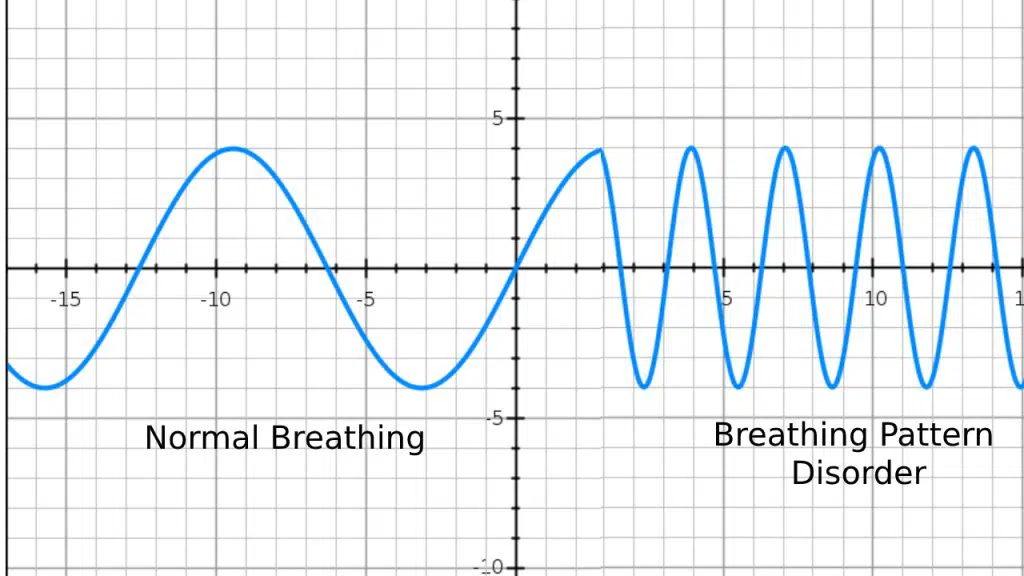What is Dysfunctional Breathing?
Dysfunctional breathing is a Breathing Pattern Disorder which causes an alteration in the normal biomechanical patterns of breathing. Also, dysfunctional Breathing is specifically related to over-breathing. This results in intermittent or chronic symptoms which can be either respiratory and/or non respiratory.
People who have dysfunctional breathing often tend to breathe rapidly through the mouth. This is, holding tension in their shoulders and breathing using the upper chest.

Symptoms of Dysfunctional Breathing
Symptoms of dysfunctional breathing include respiratory, neuronal and vasoconstriction related symptoms.
Respiratory symptoms
- Dyspnoea/ Shortness of Breath
- Chest tightness
- Chest pain
- Deep sighing
- Exercise-induced dyspnoea
- Frequent yawning
Neuronal symptoms
- Paraesthesia – The tingling sensation in the fingertips and around the mouth.
Vasoconstriction
Dysfunctional breathing is associated with symptoms associated with vasoconstriction. Vasoconstriction happens when the muscles around your blood vessels tighten to make the space inside smaller. As a result, the following symptoms may be experienced.
- Lightheadedness
- Visual disturbance
- Loss of consciousness
- Increased cardiac output and heart rate
- Chest pain
- Palpitations
What causes Dysfunctional Breathing?
Dysfunctional breathing is sometimes a sign of other underlying medical conditions or unhealthy lifestyle patterns.
The diaphragm serves as a “roof” for the abdominal wall, and it is connected to the spinal musculature. Therefore, the diaphragm may be sparked into an abnormal and habitual breathing pattern. This happens as a consequence of respiratory disease, musculoskeletal dysfunction, chest pain. Also, physiological stress related to challenging exercise or even due to certain medications could cause Dysfunctional breathing.
They are as follows:
Medical conditions
- Asthma
- Pneumonia
- COVID-19
- COPD
- Blood clot in the lungs
- Fluid in the lungs
- Anaemia (lack of iron)
- Poor posture
- Anxiety
- Depression
How to manage Dysfunctional Breathing Patterns
#1 Education
One of the main steps in managing Dysfunctional breathing patterns is Educating yourself about the faulty breathing pattern. It is important to identify situations that may trigger it and how the breathing patterns deviate from normal breathing to over-breathing situations. For example, if the trigger for mouth breathing is a blocked nose then medical treatment for the blocked nose will help.
Moreover, the usual breathing frequency for normal breathing is around 14 times a minute, but high deviations from this value result in symptoms of dysfunctional breathing patterns.
Breathing pattern education can lead to purposely avoiding excessive sighing, yawning and unnecessary upper chest movement.
#2 Breathing Retraining
Breathing pattern retraining can help manage dysfunctional breathing in many ways. With breathing retraining, a person starts to feel calmer simply by slowing down the breathing. It also helps to cleanse the mind of bothersome thoughts by focusing on just the breathe
Steps to take for breathing pattern retraining:
- Get into a comfortable position and close your eyes.
- Breathe in normally through your nose, and hold it for 3 seconds.
- Exhale out slowly and smoothly through your mouth.
- It is essential to always use abdominal breathing ensuring that as the diaphragm moves down you can feel the abdomen moving out
To confirm if you are using a tummy breathing style, keep one hand on your stomach and check if the hand rises as you inhale. If yes, you are using a tummy breathing style.
#3 Nutrition
Nutrition is a very important aspect to think of when managing dysfunctional breathing patterns. This is because large fluctuations in massive in blood-sugar levels make dysfunctional breathing pattern symptoms worse. The following tips can be followed to manage nutrition that may affect your breathing pattern.
- Avoid large meals
- Eat regularly in smaller portion sizes
- Encourage healthy snacks in between meals
- Have sufficient protein intake
- Encourage spices like Cinnamon
- Avoid high-caffeine inclusive foods (Coffee, black tea, green tea)
#4 Relaxation and mindfulness
Relaxation of the mind and body helps in reducing anxiety responses and physically tense situations that encourage upper chest breathing. Therefore, relaxation can help control upper chest and shoulder movements by reducing tension.
#5 Address musculoskeletal concerns
Musculoskeletal problems such as neck pains and back pain, particularly due to poor posture can result in dysfunctional breathings. Therefore, it is important to alleviate these by seeing a musculoskeletal therapist and strengthening the core abdominal muscles.
#6 Exercise
Exercise enhances general well-being, self confidence and the effect of psychologically disturbing traits. However, before initiating exercises, it is important that specialist consultation is made. as excessive exercise as initially discouraged in extremely fatigued patients until they reach a balanced breathing pattern. This is because unsupervised exercising may exacerbate overbreathing due to excessive usage of oxygen capacity.
If you feel symptoms of breathing pattern disorder consult with a specialist respiratory physician. An evaluation of common associated conditions can be made and treatments initiated. Advice on breathing pattern training can also be given.
Disclaimer: The information provided in this article is for informational purposes only and is not a substitute for professional medical advice, diagnosis, or treatment. Always seek the advice of your healthcare provider with any questions you may have regarding a medical condition or treatment.

